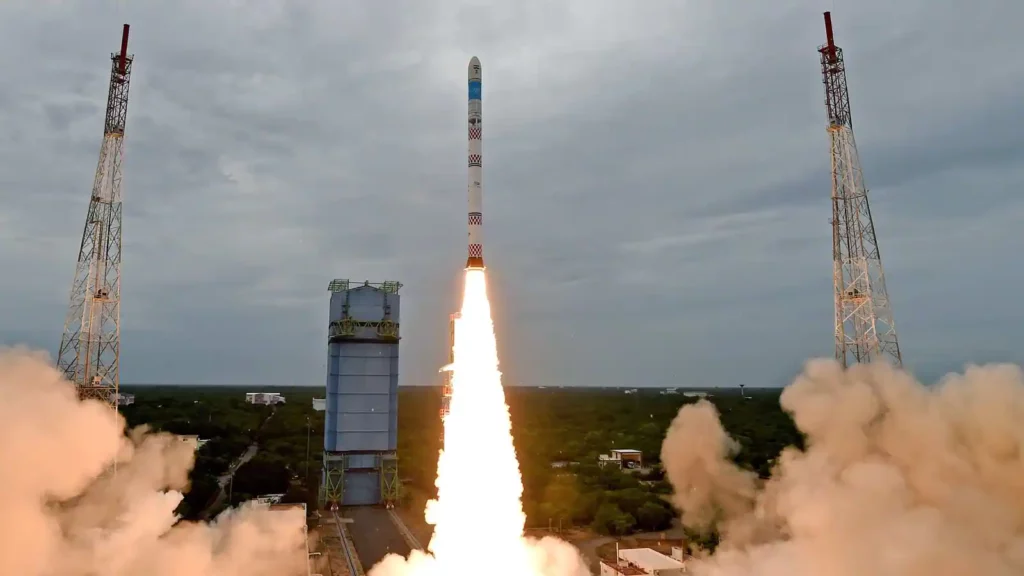The vision
The contemporary space era in India was officially inaugurated on November 21, 1963, when a tiny rocket launched from Thumba, a seaside fishing hamlet outside of Thiruvananthapuram. The quaint, palm-lined seaside community was formerly known as Thumba Equatorial Rocket Launch Station (TERLS), and then it changed its name to Vikram Sarabhai Space Centre (VSSC).
The Physics Research Laboratory was first established on November 11, 1947, by Dr. Vikram Sarabhai, who was only 28 years old at the time. He persuaded the government to support the Indian Space Program because he was inspired by a vision of space exploration. The Indian National Committee for Space Research (INCOSPAR), which was established on February 16, 1962, set the groundwork for the establishment of the Indian Space Research Organization (ISRO), which now stands tall among other prestigious institutions.
The foundation for rocket launches and space exploration was created by Dr. Homi Jehangir Bhabha, better known by his stage name HOMI BHABHA. Dr. Sarabhai and Dr. Bhabha, two visionaries, are credited with starting India’s nuclear programme and space exploration, respectively.
The search
Dr. Vikram Sarabhai got to work on locating the best launch site once INCOSPAR (the Indian National Committee for Space Research) was established. Near Thiruvananthapuram, there was a quiet village called Thumba with coconut groves and thatched houses. Definitely not the first place that comes to mind when constructing a rocket launch facility. Thumba, in Dr. Sarabhai’s opinion was the ideal location for a spacecraft launch.
The bishop requested his congregation’s approval before handing the church over to the scientists during the liturgy after explaining the scientific mission. In 100 days, the villagers moved to a new village with a brand-new church after agreeing to the Rev. Bishop’s request and his efforts. Permission was given, the paperwork was completed, and the residents moved. And so the first Indian rocket was transported on a bicycle and was launched which paved the way to the developments that we see today.
Vikram-S: The visionary’s dream comes true
It has been almost 60 years since the first rocket launch and today we have come to the point where a new beginning is at our arm’s reach. Skyroot Aerospace, a 4-year old Hyderabad based startup has made history by becoming the first private Indian company to launch a rocket into space. “Prarambh”, the name for this mission is as apt as is the name of the rocket itself. With a payload capacity of 480 kg for low-Earth orbit and maximum speeds reaching Mach 5 which is 5 times the speed of sound, Vikram-S is a small-lift launch vehicle. There are three phases that are fueled by solid fuel. A burn period of 80 to 108 seconds is available for each level. The rocket stage is constructed with a high-strength carbon fibre construction, solid fuel, an EPDM thermal protection system, and a carbon ablative nozzle, according to an IANS report.
Vikram-S rocket is fueled by the Kalam-80 engine.
Launched from the famous Sriharikota, the launch of Vikram-S, has finally broken the ISRO monopoly in the space sector in India. This was possible due to two men who thought that way. Now in their early 30s, Pawan Kumar Chandana and Naga Bharath Daka departed ISRO and formed Skyroot Aerospace, the start-up which built the suborbital vehicle. The launch was made feasible when the government allowed the space sector to be opened for private companies in India. Additionally, the private companies are also permitted to utilise ISRO’s launch facilities.
The Prarambh mission also demonstrates to the world India’s private sector’s potential. The private sector’s entry will also expand the nation’s space economy. Government estimates place the value of the Indian space sector at $7 billion in 2019 with a potential growth to $50 billion by 2024. The success of Skyroot will encourage more businesses to enter the space industry, which will help manufacturing and defence systems.
(Source: EconomicTimes, 2022)
The firm also states that more than 20,000 satellites will be launched in the coming decade. According to Skyroot Aerospace, “Vikram series is designed to enable this through unprecedented mass producibility and affordability.” “The leading technology architecture of Vikram vehicles offers unique capabilities like multi orbit insertion, interplanetary missions; while providing customised, dedicated and ride share options covering a wide spectrum of small satellite customer needs“.
The “Prarambh mission” has turned out to become an inspiration, a guided light in the unexplored space sector that is motivating other companies to enter the field. This will in turn, bring out new innovations and a new sector of employment for the youth of the country.


Very nice and informative article for this and next generations.
Thank you for your kind words. We are very passionate about drones, defence and Earth Observation. Their use in monitoring and surveillance can have a major impact on the security of our borders. Please check out our other articles and provide your feedback.